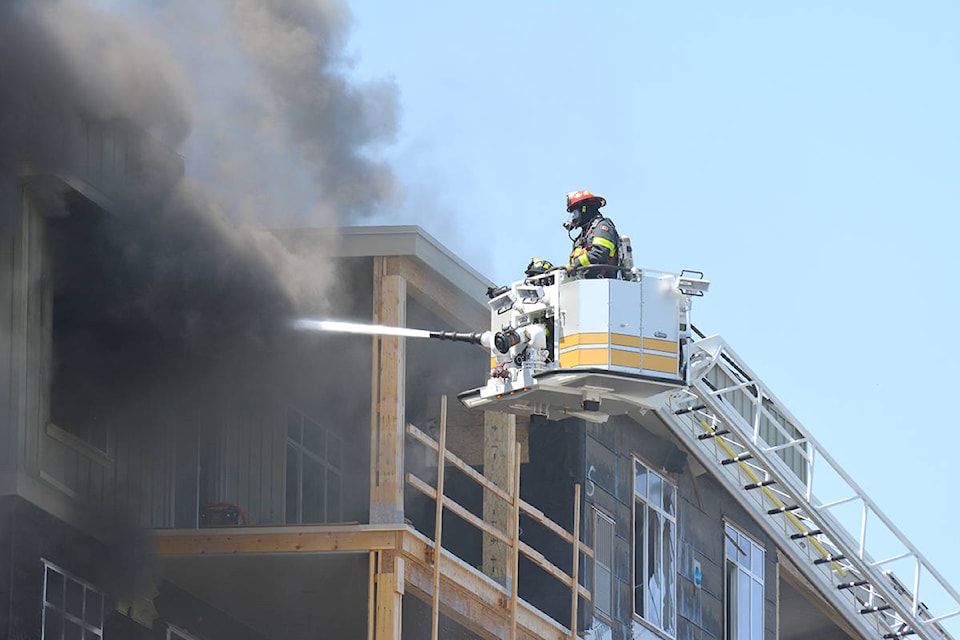How firefighters initially respond to a fire can make the difference between saving a building and watching it be devoured by flames.
More resources were needed at the beginning of the blaze which destroyed a building and displaced locals last weekend, said Kelowna Professional Fire Fighters Association president Mike Hill.
“It’s at the start of the fire that we have concerns about, because basically the first five to 10 minutes can be the difference,” he said.
The City of Kelowna has 19 firefighters on duty at any given time, but the National Fire Protection Association standards say between 27 to 29 firefighters are required to fight a blaze the size of the building that was engulfed Saturday, said Hill. The standards are also for one unit.
There were three units on fire, June 8 on Truswell Road and close to 30 fire fighters battled the blaze.
“Resources were stretched incredibly thin,” said Hill.
There was also more safety concerns for the firefighters and the public because of the hot weather and the building under construction did not have a sprinkler system, he said.
Three firefighters were also sent to the hospital, one of which was badly burned.
“That was the beginning stages of the fire so they had worked themselves to the point of exhaustion. There were too many jobs to do with the resources that we have,” said Hill.
A firefighter strategic plan requested city council to expand the firehall in Glenmore, as well as add a new fire truck for the hall and hire 12 full-time firefighters. The request was deferred in December 2016.
Fire chief Travis Whiting said there is a need for more firefighters and improvements to the Glenmore Fire Station, but the plan relies on stats and not isolated incidents.
“Our strategic plan is based on analytics, looking at trends and patterns instead of one single event. Certainly, this was a large event and this is the kind of event we train and prepare for. The more assets we have on a big fire, the better. But the strategic plan really looks at the bigger picture of what the community needs,” he said.
He believes the fire department handled the situation well, despite the setbacks.
“We had all on-duty staff and call-ins and every piece of apparatus available to us on that scene and the crews did an amazing job at working that fire during an extremely hot day combined with wind. So that created a number of challenges for us, but we threw everything we had at it,” said Whiting.
Moving forward, the department will be looking at the proper resourcing level for Kelowna which is based on historical trends as well as comparing to similar communities like Sannich and Kamloops, said Whiting.
Hill said he agrees the strategic plan is a good plan and it calls for another hall down the road. It also moves Kelowna closer to the NFTA standard, he said.
The plan also helps with handling the strategic coverage of Kelowna, with more people attending UBCO and moving to the area.
Hill’s biggest message is there needs to be more firefighters on duty for the start of large fires.
The cause of the fire has been determined to be construction work on the roof but the investigation is ongoing, said Whiting.
